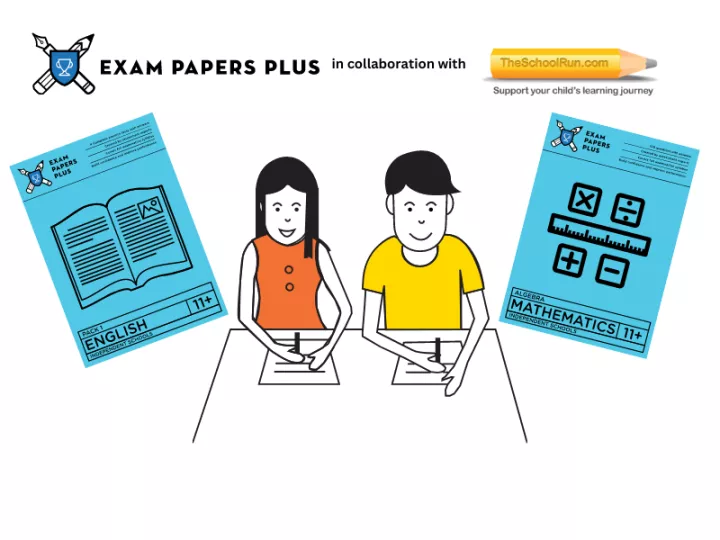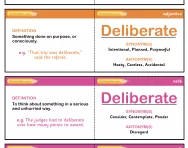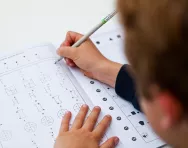Important update from TheSchoolRun
For the past 13 years, TheSchoolRun has been run by a small team of mums working from home, dedicated to providing quality educational resources to primary school parents. Unfortunately, rising supplier costs and falling revenue have made it impossible for us to continue operating, and we’ve had to make the difficult decision to close. The good news: We’ve arranged for another educational provider to take over many of our resources. These will be hosted on a new portal, where the content will be updated and expanded to support your child’s learning.
What this means for subscribers:
- Your subscription is still active, and for now, you can keep using the website as normal — just log in with your usual details to access all our articles and resources*.
- In a few months, all resources will move to the new portal. You’ll continue to have access there until your subscription ends. We’ll send you full details nearer the time.
- As a thank you for your support, we’ll also be sending you 16 primary school eBooks (worth £108.84) to download and keep.
A few changes to be aware of:
- The Learning Journey weekly email has ended, but your child’s plan will still be updated on your dashboard each Monday. Just log in to see the recommended worksheets.
- The 11+ weekly emails have now ended. We sent you all the remaining emails in the series at the end of March — please check your inbox (and spam folder) if you haven’t seen them. You can also follow the full programme here: 11+ Learning Journey.
If you have any questions, please contact us at [email protected]. Thank you for being part of our journey it’s been a privilege to support your family’s learning.
*If you need to reset your password, it will still work as usual. Please check your spam folder if the reset email doesn’t appear in your inbox.
Your region-by-region guide to the 11+

There are around 160 grammar schools in England, and another 69 in Northern Ireland, covering 24 separate regions. And although the 11+ has many similar features across all parts of the UK, it does vary from area to area.
For example, in a few regions, such as Buckinghamshire, all primary school children are entered for the 11+ automatically, whereas in others, parents have to enter their child for the test.
The actual content of the papers can differ from region to region; most include verbal reasoning and non-verbal reasoning, but some also require children to do a creative writing task, for instance.
The weighting of marks varies, too, with some schools allocating 50% of the marks to verbal reasoning and 50% to non-verbal reasoning, while others will give more weighting to one paper than the other.
These variations mean it’s essential to find out as much as possible about the 11+ in your area, to give your child the best chance of success.
NB: all information in this article was correct at the time of publishing and will be reviewed regularly, but is subject to change.
Exam Papers Plus & TheSchoolRun.com
If you're looking for practice papers for your child's 11+, our partners at Exam Papers Plus have papers, courses and mock exams for each area.
And their Pretest Plus offers online tests and video courses to help your child succeed at CAT, ISEB PRETEST, CEM SELECT and UKISET examinations.


Prepare For The 11+ Exam
- Essential English and maths skills
- Verbal and non-verbal reasoning questions
- Reading comprehension & CLOZE tests
11+ preparation: where to start
Your first port of call when finding out about the 11+ in your area is to look at the website of your preferred school.
‘They will have information about which test provider they use, an overview of the areas covered, details about how the test is taken, and, usually, practice papers that your child can use as a familiarisation exercise,’ explains Charlotte Gater, Head of Curriculum at private tuition service Explore Learning.
Finding out the test provider in your area is one of the most important things you can do, as the content and format of the papers differs between them.
‘Companies that provide materials will have spoken to educators and pupils to find out what sort of questions come up when developing their resources.’
A few schools use a different provider, and some set their own papers, so it's vital to find out what sort of test each school sets.
CEM tests no longer in use from September 2023
CEM 11 plus tests will no longer be available from September 2023. Schools who previously used CEM will now move to GL or another provider. It's important to check with the school to make sure you have the correct information. This was reported by ExamHappy and has since been confirmed by CEM.
Helping your child prepare for the 11+
Some skills are universal across all 11+ tests, which means there are lots of areas that you can work on with your child to help them prepare.
‘Whichever region you’re in, your child will need a really strong grounding in vocabulary, English and maths, so things like reading, listening to audiobooks and playing games that are maths and vocabulary-based will help them prepare,’ Charlotte says.
'If your child doesn’t understand the wording, a lot of questions become inaccessible.
‘You can also work on your child’s speed and accuracy, because they have to work quickly if they’re to complete everything they need to in the exam. A good way to do this is to ask them 10 questions and time how long it takes them, then give them another 10 to see if they can beat their first time.’
How tutoring could help
While it’s perfectly possible to prepare your child for the 11+ yourself, many parents use a tutor.
As well as coaching your child to succeed, tutors can give you an insight into the 11+ in your region, so you and your child feel confident about what they need to do.
‘Tutors will have experience of the style of test and the type of questions asked in your area, so they can focus on the right areas,’ Charlotte explains.
‘This can be a great source of support and information for you as well as your child.’
Preparing for the 11+ with Explore Learning
Over the last 12 years Explore Learning has developed an 11 Plus and Entrance Exam offering that is tailored to suit the schools in the local area.
Whether your child is sitting a GL Assessment or a school’s own entrance paper, Explore Learning adapts their tools to prepare for many of the local consortia. But more than this, they can continue to support children with the transition to secondary school and the new challenges they face.
The 11+ region by region: Berkshire
Test provider: GL
Insider info:
- In Berkshire, four of the seven grammar schools use the same 11+ test (those that are part of the Slough Consortium)
- If your child is registered with more than one school, they only take the test once, but they may receive different test results from each school. This is because their raw score is compared with a different cohort of children.
- Each paper includes a mixture of verbal reasoning, non-verbal reasoning and numerical questions. Slough will also assess English and spatial reasoning. Reading School for Boys includes a creative writing element.
- Verbal reasoning is thought to account for 50% of the marks.
- Make sure your child knows to record their answers in the answer book, and not on the question paper, or their test won't be marked.
- Herschel School in Slough is one of the most oversubscribed schools in the area, with 10+ applicants per place, but it’s renowned for its excellent special educational needs (SEN) support.
- St Bernard’s is usually the least subscribed school in the area, which gives your child more chance of getting a place.
The 11+ region by region: Bexley
Test provider: GL
Insider info:
- The Bexley Test applies to all grammar schools in the area, and includes verbal ability (verbal reasoning), non-verbal reasoning, English comprehension and numerical reasoning.
- Each 45-minute paper includes a mix of questions from all four areas.
- Most questions are multiple choice.
- Instructions are given on an audio recording.
- When you register your child for the test, you’ll be sent a link to online practice questions.
- Results are weighted 50% for verbal ability, 25% for non-verbal ability and 25% for numerical ability.
- The top-scoring 180 children are guaranteed a place at their first choice of school.
- If your child goes to primary school in Bexley, they’ll sit the test at their own school. Pupils at other schools will take the test at a test centre.
- Some children in this area also take tests for schools in other areas, such as Medway, and the test dates sometimes clash. If this happens, you can request a specific one of the four Bexley test sessions.
The 11+ region by region: Birmingham
Test provider: GL Assessment
Insider info:
- There are eight schools making up the Consortium of Grammar Schools in Birmingham, and they use the same test.
- Qualifying scores differ for each school but are around the 200 mark.
- Because the schools are so oversubscribed, children may have to achieve over the qualifying score to get a place.
- 50% of marks are allocated to verbal ability. Numerical and non-verbal ability are weighted 25% each. Birmingham will also assess English.
- Sample papers are sent to parents when they register their child.
- If your child wants to apply to schools in Birmingham and in Warwickshire, they will only sit the test once, in one area. The results are then shared.
- Queen Mary’s Grammar School and Queen Mary’s High School in Walsall are now part of the Wolverhampton and Wrekin consortium.
The 11+ region by region: Bromley
Test provider: GL Assessment/school
Insider info:
- There are two rounds of testing for St Olave’s. The school sets its own Selective Eligibility Test (SET) for the first round of testing, and GL Assessment for the second round. Only boys who reach the required standard in the SET will be invited back for the second test.
- For Newstead Wood, all girls in the nine-mile catchment area are invited to sit the test first. If not all of the places were filled, there would be a second test for out-of-area pupils, but as the school is oversubscribed, this has never happened.
- St Olave’s SET includes maths, English, logic, verbal and non-verbal questions. The second test covers English and mathematics.
- Newstead Wood’s doesn't disclose its test provider, but its 11+ includes verbal and non-verbal reasoning: all multiple choice.
- For both schools, if two pupils achieve the same score, their non-verbal reasoning score will be used as a tie-breaker.
The 11+ region by region: Buckinghamshire
Test provider: GL Assessment
Insider info:
- Primary school children who go to school in Buckinghamshire are automatically entered for the 11+ (the Buckinghamshire Transfer Test) unless you opt out, and sit one test that can be used to apply to all of the schools.
- They’ll sit a preparation test, which is slightly shorter than the official test and not marked, at school as a familiarisation exercise.
- There are two test papers. Paper one covers verbal reasoning, including comprehension and technical English. Paper two covers non-verbal reasoning, including spatial reasoning and maths.
- Verbal reasoning accounts for 50% of the marks, and non-verbal reasoning and maths 25% each.
- All children who achieve the qualifying score of 121 qualify for a place: a higher score doesn’t give them a greater chance of a place. If the schools are oversubscribed, other criteria are applied, such as distance.
The 11+ region by region: Devon
Test provider: GL Assessment/FSCE (Future Stories Communication Enterprise)
Insider info:
- FSCE tests are used by Colyton Grammar and include maths, English and creative writing.
- The Torbay grammar schools have two papers covering English and mathematics.
- In Torbay, children take the test at their first choice of grammar school, so make sure you choose the test centre based at the school you want your child to go to. The results can be shared with the other grammar schools in the area.
- The Plymouth grammar schools have two GL Assessment papers: paper one covering English comprehension and paper two, covering maths and English – all multiple choice. These schools also set their own written English test, some may include creative writing.
The 11+ region by region: Dorset
Test provider: GL Assessment
Insider info:
- All four Dorset grammar schools use the same test. You can choose which secondary school your child will be tested at.
- There are three papers – verbal reasoning, English and maths – and all test questions are multiple choice.
- Meeting the required standard in the test (being ‘eligible’) isn’t a guarantee of a place. If the schools are oversubscribed – as is usual – places will be offered according to result, in descending order.
- The schools suggest talking to your child’s current headteacher to ask whether they think they are suited to a grammar school education.
- There’s no fixed pass mark, but historically, scoring around 85% is sufficient to gain a grammar school place.
The 11+ region by region: Essex
Test provider: CSSE (Consortium of Selected Schools in Essex)/ FSCE
Insider info:
- Chelmsford County High School for Girls has FSCE papers covering maths, English and creative writing.
- Instructions are provided by audio recording.
- The other 10 selective schools in the area form the Consortium of Selective Schools in Essex (CSSE) and use the same Essex 11+ papers written by the consortium.
- CSSE has two papers: English (including two pieces of creative writing) and maths, each worth 50% of the marks.
- You can purchase the past two years’ CSSE papers from the Consortium.
- You can choose which CSSE school your child sits the test at. Fewer children tend to take the test at St Bernard’s and St Thomas More, which may be helpful if your child is nervous.
- Headteachers at the CSSE schools recommend your child has a reading age of over 11.
The 11+ region by region: Essex – Redbridge
Test provider: GL
Insider info:
- The 11+ in Essex - Redbridge covers verbal ability (vocabulary, comprehension and verbal reasoning), numerical reasoning and non-verbal reasoning.
- Because of the popularity of the schools and their high entrance standards, both schools advise speaking to your child’s primary school headteacher about whether they think your child should take the test.
- Although your child can take the test wherever they live, no out-of-catchment pupils have been accepted in the past five years.
- Bear in mind that neither of the schools where your child can take the test have parking – use public transport or allow plenty of time to get there.
The 11+ region by region: Gloucestershire
Test provider: GL assessment
Insider info:
- All Gloucestershire grammar schools use the same test, which comprises verbal ability (comprehension and verbal reasoning), numerical reasoning and non-verbal reasoning.
- All questions are multiple choice.
- The Crypt School advises children to practise their Year 5 and Year 6 maths, read widely and write down words they don’t know in a glossary to boost their vocabulary. As the same test is taken for all Gloucestershire grammar schools, this advice can be taken on board regardless of which school(s) you’re applying to.
- Stroud High School allows children to take a test for entry into Years 8, 9 or 10 if they don’t succeed in the 11+.
- Some of the schools aim to put children from the same primary school together on test day, and older students are around to provide support before and between the tests.
The 11+ region by region: Hertfordshire – SW Herts
Test provider: GL Assessment
Insider info:
- There are no fully selective schools in the Hertfordshire Consortium, which covers South West Herts. Schools take a percentage of pupils based on academic ability. The other places are mostly filled by siblings and pupils living nearest the schools.
- All of the schools except Bushey Meads admit a number of children based on musical aptitude. This is assessed by an aural test with written answers; children who pass are then invited back to perform.
- Bushey Meads accepts a small number of pupils based on technological aptitude, which is assessed by a non-verbal reasoning paper.
- Queen’s School accepts a number of pupils who excel in sport, based on a physical assessment set by the Council of European Physical Fitness.
The 11+ region by region: Hertfordshire – Barnet and Enfield
Test provider: GL Assessment/schools
Insider info:
- Each of the schools in Barnet and Enfield has its own test and admissions criteria.
- Henrietta Barnett has two rounds of testing. Round one comprises verbal reasoning, non-verbal reasoning and English (GL Assessment). The top 300 pupils are invited back to sit a second school-written test in English and maths.
- Queen Elizabeth’s School sets multiple choice papers in English and maths.
- Mill Hill County High School sets GL Assessment papers in verbal reasoning and abstract reasoning. It also admits some pupils based on music and dance auditions, and technological aptitude tests.
- St Michael’s sets multiple choice papers in verbal reasoning, non-verbal reasoning, English and maths.
- Latymer School sets GL Assessment papers in maths, English and verbal reasoning. There’s also a reading and writing test written by the school itself.
- Schools in this area are highly competitive, with 10 applications per place at some.
The 11+ region by region: Kent
Test provider: NFER/GL Assessment
Insider info:
- This is the largest grammar school area in the UK, and as such, some schools are usually undersubscribed, and take a number of pupils who don’t quite pass the 11+.
- It’s vital to explore the admissions criteria of each school, as they vary significantly.
- Most schools use a universal test: the Kent Test.
- The Dover grammar schools have their own test – the Dover Test – and Folkestone School for Girls has its own test – the Shepway Test.
- In previous years, pupils applying to Kent and Medway schools only had to sit the test in one area, but now they must sit separate tests for each area.
- Mayfield Grammar School allows girls who have failed the Kent Test a second chance to gain a place through its own test.
- Be aware of the different formats of the test in this area. The Kent Test is written, while the Shepway Test is completed on a computer.
- If your child narrowly fails the Kent Test, their headteacher can submit a report for consideration.
The 11+ region by region: Lancashire and Cumbria
Test provider: GL Assessment
Insider info:
- There’s only one grammar school in Cumbria – Queen Elizabeth – and it sets questions in verbal and non-verbal reasoning and numerical ability.
- The four Lancashire grammar schools share the same test in verbal reasoning (50 minutes), English (45 minutes) and maths (50 minutes).
- General advice is that prospective pupils should be working ‘at greater depth’ in primary school to have a reasonable chance of getting a grammar school place.
- Pupils are ranked based on a combined score in all three subjects, but they must also achieve a minimum score in each separate area.
- You should let the schools know in writing if your child is, or has ever been, eligible for free school meals – if they are oversubscribed, pupil premium will be taken into account.
The 11+ region by region: Lincolnshire
Test provider: GL Assessment
Insider info:
- All of the schools are part of the Lancashire Consortium of Grammar Schools, so pupils who pass the 11+ can apply to them all, except Caistor Grammar, which has its own test.
- Make sure you check the deadline for submitting your application for your child to sit the test, as it varies between schools. For some, you have to register as early as May.
- In some areas, children sit the 11+ in their own primary schools; in others, they have to take it at one of the secondary schools.
- Sometimes the test dates for the Consortium and Caistor Grammar clash, but you can usually arrange for your child to take the Consortium test on a different day.
The 11+ region by region: Medway
Test provider: GL Assessment
Insider info:
- The Kent and Medway Tests used to be transferrable, so children only needed to sit one test even if they were applying to schools in both areas, but now, they’ll need to set a separate test for each.
- There are multiple choice tests in maths and verbal reasoning, plus an extended writing task which is usually a 40-minute essay. Their assessment will include NVR (with elements of Spatial Reasoning).
- The tests are weighted 20% for verbal reasoning, 40% maths and 40% English.
- If your child doesn’t pass, you can submit examples of their classwork from Year 5 and Year 6, in maths, English and science, to be reviewed.
The 11+ region by region: Northern Ireland
Test provider: GL Assessment – SEAG
2023 11+ news:
Schools Entrance Assessment Group (SAG) will administer transfer tests in Northern Ireland from September 2023 and the tests will be produced by GL assessment organisation. There will be two assessment papers, one will be sat on 11 November 2023 and the other on 25 November 2023. Both test papers will have English and maths questions and will have the option to be assessed in Irish rather than English. Here's what we know about this new test:
- SEAG tests will replace AQE and PPTC so you only need to apply to one testing organisation.
- Fee of £20 to sit the test. Free if your child receives free school meals.
- Exams will take place in one of the SEAG schools that use academic selection.
- There are two papers and both have the same format.
- The first section of the test has 5 English (or Gaeilge) and 5 maths questions. These are designed to help children get prepared and settled before the main test. This part is not assessed.
- Second section has 28 English (or Gaeilge) questions, including a punctuation exercise, a grammar exercise and a spelling exercise. This is followed by English comprehension with 7 multiple choice questions and 6 'free response' questions.
- The third section is the maths main test and has 28 questions, 22 are multiple choice and 6 are 'free response'.
- Pupils have 60 minutes.
- Practice papers are free and can be found on the SEAG website.
- Most schools have made this switch to these new SEAG assessments but you may want to check with your chosen school to be sure.
The 11+ region by region: Surrey
Test provider: Sutton area uses SET (Selective Eligibility Test)
Insider info:
- There are two areas within the Surrey 11+ region: Kingston upon Thames and Sutton.
- Schools in Surrey are heavily oversubscribed and are some of the trickiest in the country to get into.
- Mock tests are usually offered around June, to get children used to exam conditions: they will sit the tests in exam halls of around 1000 children.
- Across the region, all of the selective and partially selective schools set tests in two rounds. Pupils are ‘sifted’ by the first test, and the highest achievers are invited to sit the second test.
- Both rounds of tests include English and maths questions.
- Schools generally take the results of both rounds of testing into consideration, but weighted towards the second round tests.
- The subject-specific weightings used by individual schools varies, so check with your preferred schools to see where your child should focus their preparation.
The 11+ region by region: Trafford
Test provider: GL Assessment/schools
Insider info:
- Four schools in the Trafford area – Altrincham Grammar School for Girls, Sale Grammar, Stretford Grammar and Urmston Grammar – form the Trafford Grammar Schools Consortium.
- TGSCC schools have one common test. Parents can request that their child’s raw scores are taken into account any or all of the schools in the consortium.
- The TGSCC sets two papers, each of which includes verbal ability, numerical reasoning and non-verbal reasoning.
- Some schools will automatically review the results of children who fall narrowly short of the pass mark.
- Altrincham Grammar School for Boys uses GL Assessment tests in verbal and non-verbal reasoning and maths. There’s also a creative writing paper set by the school, which is only taken into account if a child just misses the pass mark.
- Loreto Grammar School uses tests in English and verbal reasoning set by GL Assessment, and writes its own maths paper, which is of a similar level to KS2 SATs.
- All three papers at St Ambrose College – verbal reasoning, English and arithmetic – are set internally.
The 11+ region by region: Warwickshire
Test provider: GL Assessment
- The grammar schools in Warwickshire and Birmingham make up a consortium – the Grammar Schools in Birmingham – and all of them use the same test. Children only sit the test once.
- The test includes verbal reasoning, non-verbal reasoning and numeracy. They may also assess English comprehension.The weightings for each area vary between schools, so check with the individual schools that you want to apply to.
- If you’re applying to schools in both Warwickshire and Birmingham, your child will sit the 11+ in one area, and you can request that their raw scores are shared with the other area.
- Your child will receive two sets of results: one from each area. They may be different, as the standardisation process varies differs in each.
- There are ‘priority areas’ (catchments) within this consortium, which affect the likelihood of your child being offered a place.
The 11+ region by region: Wiltshire
Test provider: GL Assessment
Insider info:
- There are two grammar schools in Wiltshire.
- Bishop Wordsworth School for Boys and South Wilts Grammar School for Girls both use GL assessments.
- There’s a slightly lower pass mark (usually around 3%) for boys who receive pupil premium.
- There are three papers, each testing a separate skill: maths, English and verbal reasoning. Their assessment will include NVR (with elements of Spatial Reasoning).
- The school invites pupils to sit a practice test a week before the 11+. This is a great way for girls to prepare and to settle their nerves, as they’ll be sitting in the same room and seat as on test day.
- There are about three applications per place at BWS and four at SWGS.
The 11+ region by region: Wirral and Liverpool
Test provider: GL Assessment/schools
Insider info:
- Four of the grammar schools in Wirral – Calday Grange, West Kirby and the Wirral Grammar Schools for Girls and Boys – use GL tests.
- These tests cover verbal, non-verbal and mathematics, mainly in multiple-choice format.
- St Anselm’s College sets its own tests. There are three papers: verbal reasoning, English, maths and mental maths. The English test comprises a comprehension task and an essay; the maths paper includes a lot of word problems.
- Upton Hall uses GL Assessment tests. There are two papers, both in verbal reasoning.
- The Blue Coat School has two papers: one in English and one in maths. Twenty seven places are allocated to pupils who pass the test and are eligible for free school meals. The Blue Coat School assessment will include NVR.
- There are three partially selective schools in Liverpool. St Margaret’s and St Hilda’s (a Church of England school) allocate a percentage of places based on general ability. King David High School (a Jewish school) admits a certain number based on musical aptitude.
The 11+ region by region: Wolverhampton and Wrekin
Test provider: GL Assessment
Insider info:
- All five grammar schools in the Wolverhampton and Wrekin area form a consortium with one common test. The results of the test can be used to apply for any of the schools (subject to whether they are single sex schools).
- The test involves two papers, each taking about an hour. Both papers cover verbal and non-verbal reasoning, maths, literacy and reading comprehension.
- Instructions are given by audio recording – not by a teacher or invigilator.
- At all of the schools, pupil premium children who meet the required standard are allocated a certain number of places. The remaining places are offered to children with the highest test scores, in descending order.
The 11+ region by region: Yorkshire Calderdale
Test provider: GL Assessment/schools
Insider info:
- The test for the two schools in the Calderdale area comprises three papers: English (60 minutes; 30 minutes comprehension and 30 minutes writing), maths (40 questions in 30 minutes) and verbal reasoning (50 questions in 30 minutes). The assessment will include NVR.
- The maths paper is written by the schools, rather than a national 11+ provider.
- The marks are weighted 35% English, 35% maths and 30% verbal reasoning.
- Don’t worry if your child is booked in to sit the test at your second choice school. The test venue is decided by postcode and doesn’t affect which school you apply for.
The 11+ region by region: Yorkshire Kirklees
Test provider: GL Assessment
Insider info:
- There’s just one grammar school in this area: Heckmondwike.
- Although over 800 children sit the 11+, they take the test in separate classrooms of approximately 25 pupils to make it less overwhelming.
- The entrance exam tests a range of reasoning skills in a variety of contexts. They will assess English, mathematics and Non-Verbal Reasoning, with elements of Spatial Reasoning.
- If your child reaches the required standard but the school is oversubscribed, they may be given a place if they have achieved Grade 2 in a nationally recognised music exam (ABRSM or Trinity), or if they excel in the school’s own Physical Fitness and Agility Test.
The 11+ region by region: Yorkshire North
Test provider: GL Assessment/NFER
Insider info:
- Two of the grammar schools in North Yorkshire – Ermysted's and Ripon – share a common test but they are not entirely the same. Ripon covers verbal reasoning and non-verbal reasoning, and Ermysted covers verbal reasoning English, mathematics and non-verbal reasoning.
- Skipton Girls’ High School’s entrance tests are set by GL Assessment. Each applicant sits three multiple-choice tests in English, Mathematics and Verbal Reasoning.
- If there are more pupils meeting the required standard, places are allocated first to looked-after children, then to pupil premium children, and then to children in the school’s priority area.
NB: TheSchoolRun receives a small commission from sales made through Exam Paper Plus.









